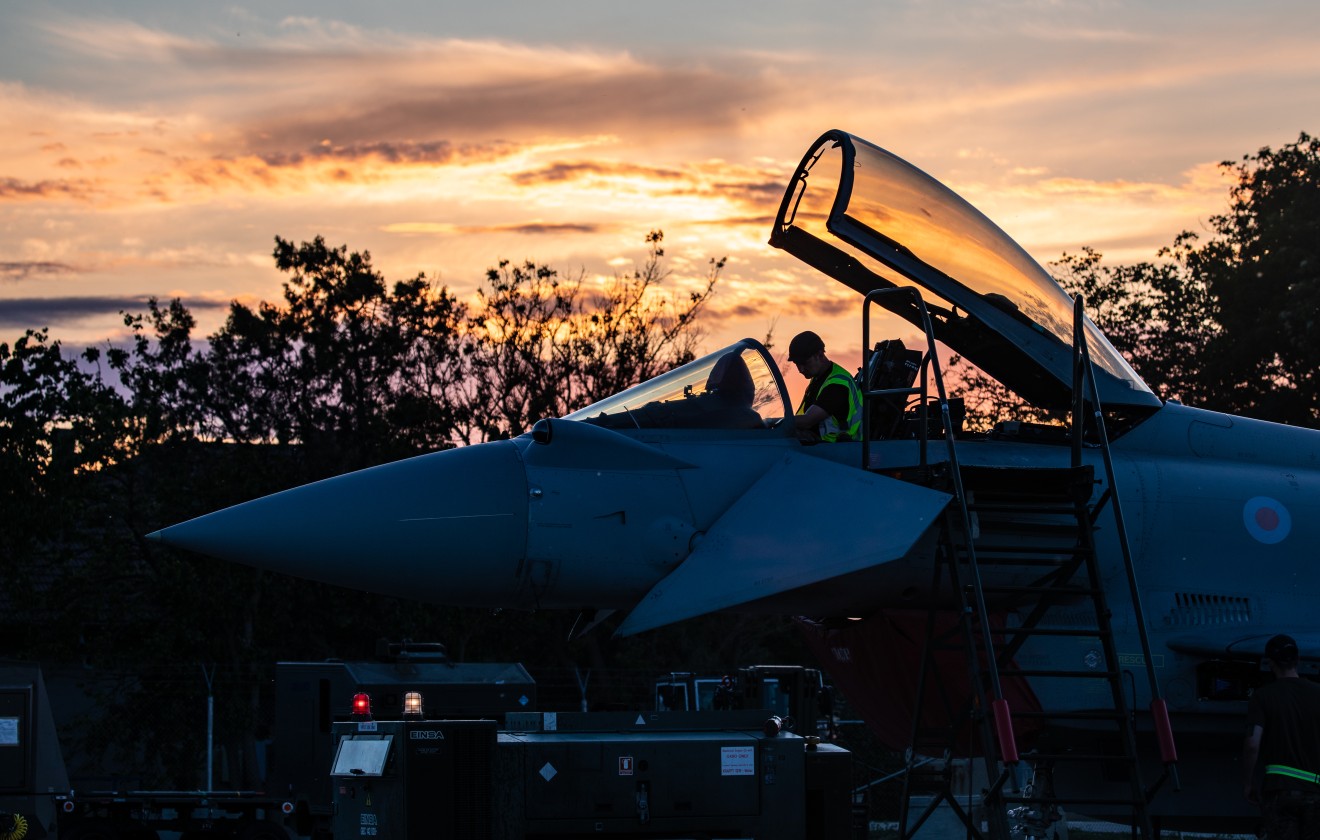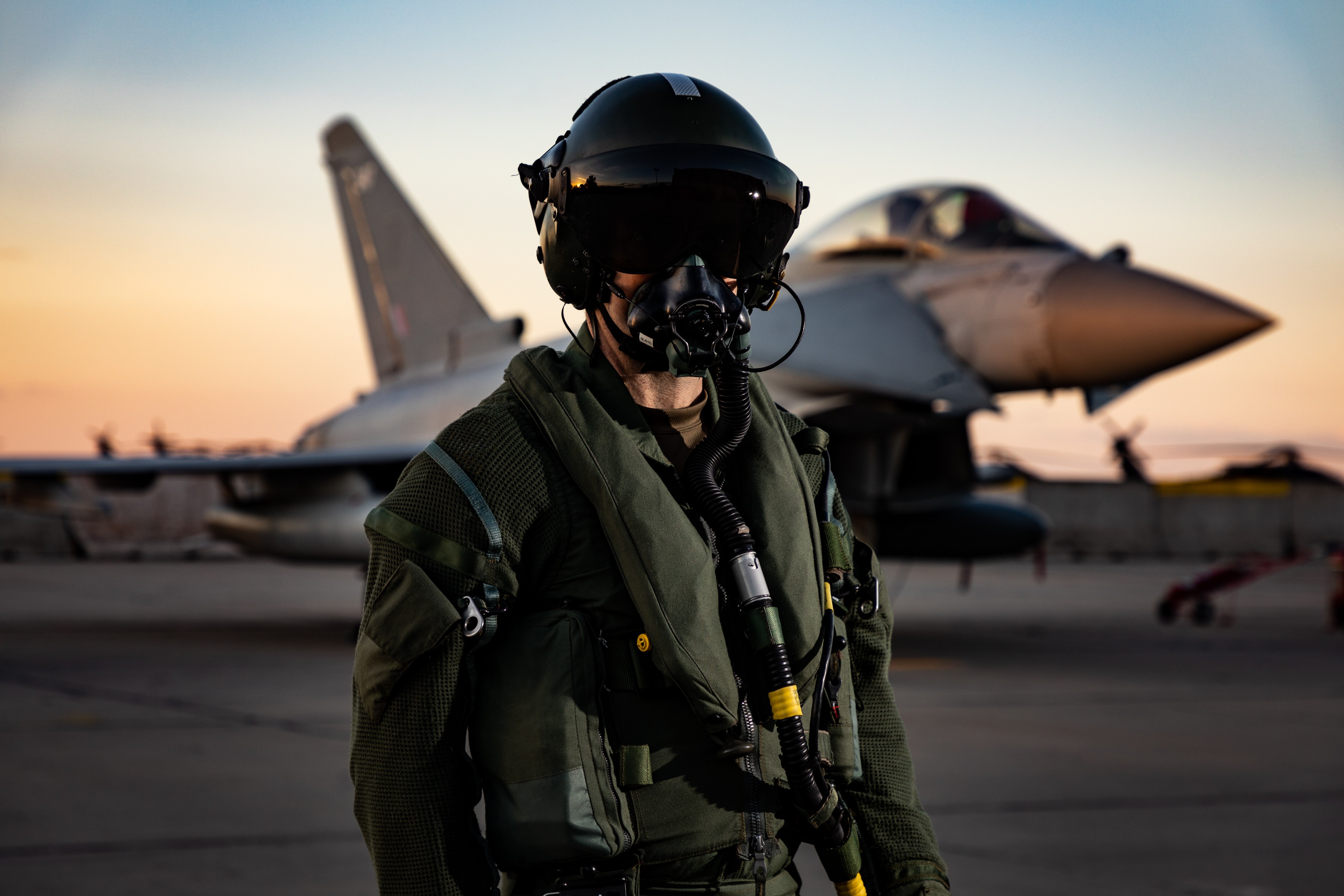
With potentially hostile aircraft travelling at over 500 mph it is imperative that we can react quickly, and this is where our jet comes into its own,” says Eurofighter Typhoon pilot Wing Commander Simon Batt.
“We can be airborne in a matter of minutes and then the raw performance allows us to rapidly climb to height and intercept the threat at supersonic speeds. The raw power and performance have always been phenomenal — flying the Typhoon still puts a smile on my face.
“Air Policing is all about securing the skies and reacting to threats immediately, wherever they are,” says Batt, who commands the UK Royal Air Force’s IX (Bomber) Squadron. “We could be called to intercept an airliner in trouble or meet a military threat anywhere within UK or NATO airspace. The avionic system and sensor fusion allow us to have excellent situational awareness of all the civilian traffic, airspace constraints, cooperating aircraft — such as an air-to-air refuelling tanker or other fighters — and target aircraft at all times.”
In April 2021, Batt led his squadron to Mihail Kogalniceanu Air Base in Romania to stand 24/7 Quick Reaction Alert (QRA) duty with their Typhoon jets. This is the first mission to Romania for IX (B) Squadron, which only achieved Initial Operating Capability with their Typhoons three months earlier.
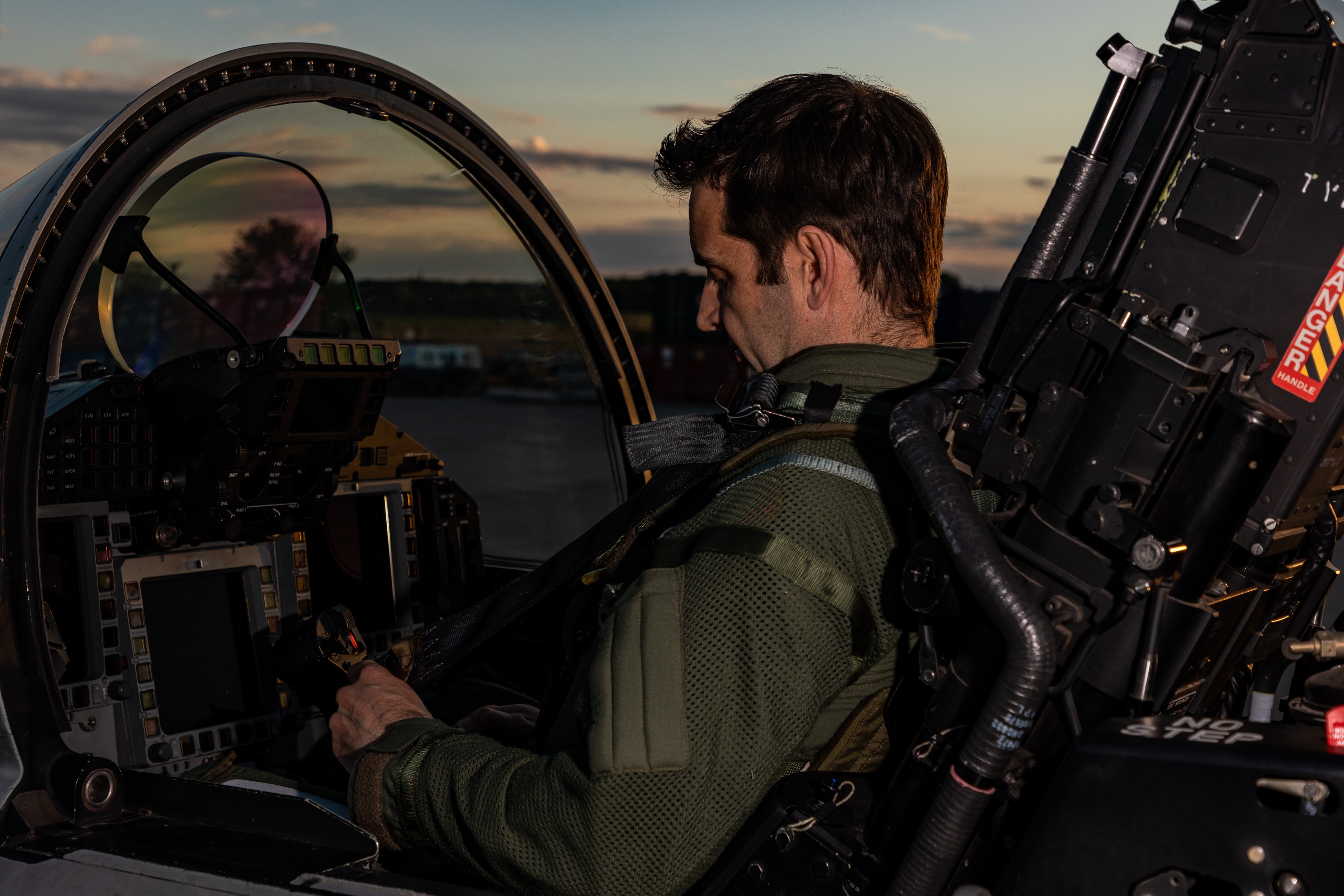
2021 is the 60th year of NATO Air Policing and the missions centre around having fighter jets ready to be scrambled in response to suspicious air activity close to NATO airspace. “When the QRA alarm sounds and we are scrambled, your mind becomes completely focused,” says Batt.
“The pilot and engineers sprint to the aircraft and rapidly get the Typhoon started and airborne. There is a myriad of checks to be done and the whole team need to work in concert to ensure we can get airborne safely and quickly. In some ways we are operating in a very similar way to a Formula 1 pit crew.
“Once airborne you are immediately assessing the tactical situation: what is the threat, what could its intent be, where is the aircraft(s) of interest, what are the weather conditions, what civilian or military traffic could be in the way. Working alongside the ground-based battlespace manager, our job is to intercept the target aircraft as quickly as possible, without endangering other airspace users.”
QRA missions are, he says something of an emotional rollercoaster, with periods of intense and rapid activity, mixed with times of relative calm and long transits. “As soon as the alarm goes you are sprinting to the aircraft, and the adrenalin kicks in.
The heart rate jumps but once you reach the aircraft your training takes over and you are completely focused on the task at hand. It is only after you have completed the mission that you have time to reflect on what you have just done. I always get an immense sense of satisfaction after a QRA mission, knowing the combined effort of the whole team has once again delivered and maintained the air deterrence 24/7.”
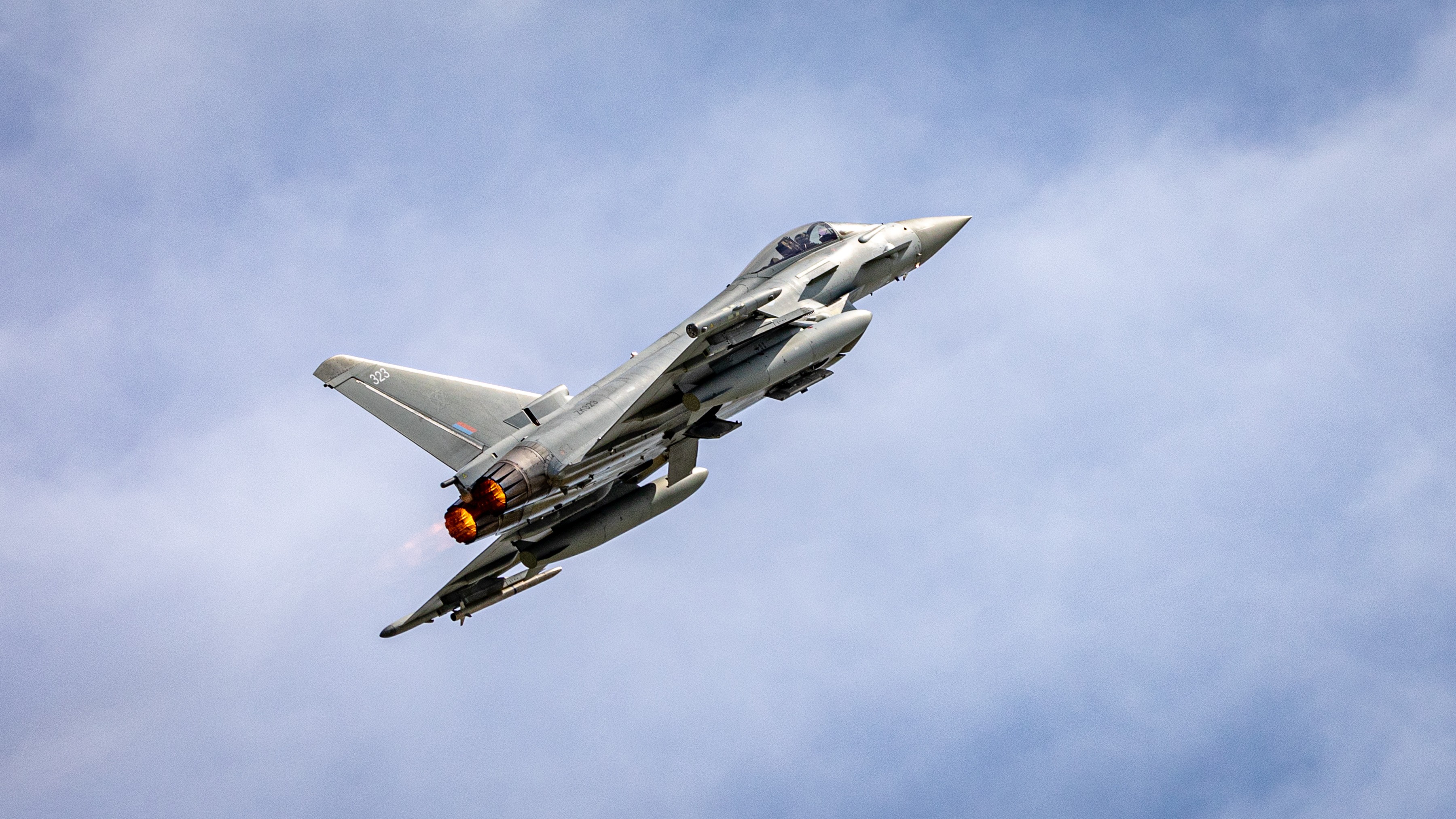
WE ARE THE FINAL LINKS IN A LONG DEFENSIVE CHAIN
The Black Sea is a highly active theatre of operations. NATO also routinely stages deterrent exercises in the region which involves Romania-based air policing units. Batt says a particularly memorable mission involved escorting two US Air Force bombers.
“It was a particular pleasure to be able to escort two USAF B-52 Stratofortress bombers across Romanian airspace, literally watching them depart in the sunset,” he says. “The interoperability we have achieved with our NATO allies across the spectrum of our activities is truly remarkable. We have seamlessly integrated with air, maritime and land forces from Romania, Hungary, Italy, Spain and the United States to name a few.”
RAF tactics and procedures are NATO-aligned and so the air policing mission in Romania is very similar to UK QRA duty. “The only real difference is the airspace we fly in,” says Batt. “We therefore fly training missions to familiarise the pilots with the operating area ahead of any QRA missions.”
“As the pilot, we are the final link in a long defensive chain of people and units. Our job is to intercept the target aircraft as quickly and efficiently as possible. We can then positively identify the aircraft and monitor its behaviour. We feed all this information back to our command chain so that they have the full tactical picture and can make informed decisions. The command chain has feeds and information from other sources that they can piece together to get a fuller picture of the situation; as a pilot we can only really see what is happening in our particular area.”
QRA duty is not all action. Batt stresses that discipline and patience as events unfold is just as important as quick reactions. “At times we may be held on Combat Air Patrol for hours waiting to see if a threat penetrates our Flight Information Region — a piece of defined airspace that a NATO country or air force looks after.”
IX(B) Squadron is the RAF’s newest Typhoon unit, which formally stood up at RAF Lossiemouth in April 2019 to be the service’s dedicated QRA and aggressor squadron. In this role, the squadrons’ pilots simulate threat aircraft during training missions and fly against other RAF and allied units.
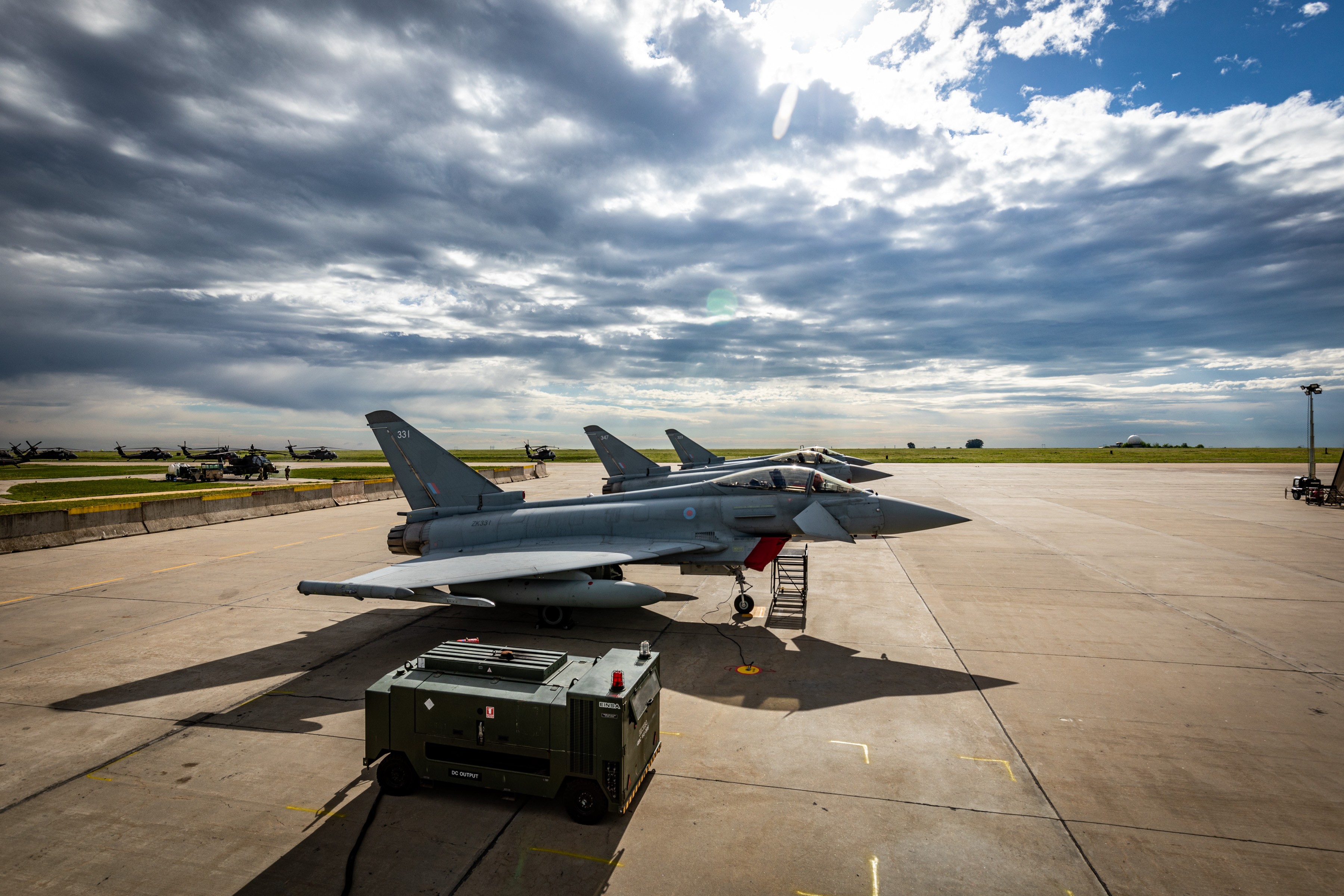
A VITAL MISSION FOR NATO
NATO has been contributing to the enhanced Air Policing (eAP) of Romanian airspace since the 2014 Crimea crisis and the alliance decided additional assurance measures were required to protect its members on its eastern flank. IX(B) Squadron’s mission is the third time the RAF has deployed to Mihail Kogalniceanu Air Base, near the port city of Constanta, for the air policing mission. Around 60 personnel from IX(B) Squadron are part of a larger 180 strong RAF contingent, under the umbrella of 121 Expeditionary Air Wing.
“It is a vital mission for the UK and NATO, allowing us to demonstrate our combined resolve and interoperability at all levels,” says Batt. “This is the first time IX(B) Squadron has deployed to Romania and we are thrilled to be here and supporting our NATO allies. Romania is a key NATO ally and we are proud of what we have achieved together. Security of the Black Sea Region is of paramount importance to both the UK and the Alliance. Operation Biloxi highlights the UK’s continued commitment to the Alliance and the region, assuring our allies and deterring any aggression.”
During its mission to Romania the RAF will host a contingent of German Luftwaffe Typhoons at Mihail Kogalniceanu Air Base for joint exercises. “They are deploying their Typhoons for a couple of weeks and we will be supporting each other, with RAF and Luftwaffe engineers working alongside each other and on each other’s aircraft,” Batt says. “This is only possible due to the alignment of our policies and procedures, which is made possible in part by the NATO alliance.”
The IX (B) Squadron pilot says that standing up a QRA detachment far from their home base is a major test of the RAF’s logistical capabilities.
“It is safe to say that deploying anywhere that requires a lot of equipment and personnel is challenging, but as an air force it is what we are trained to do and I think we do it well,” said says. “To give you an idea of the scale of the task: so far we have moved over 200 RAF Regular and Reservist personnel; four Typhoons; 35 specialist airfield support vehicles and equipment; and 72 tonnes of freight including 130 computers for use across multiple systems. All of these assets have been transported over thousands of miles to Romania from the UK by a combination of road, sea and air moves.”
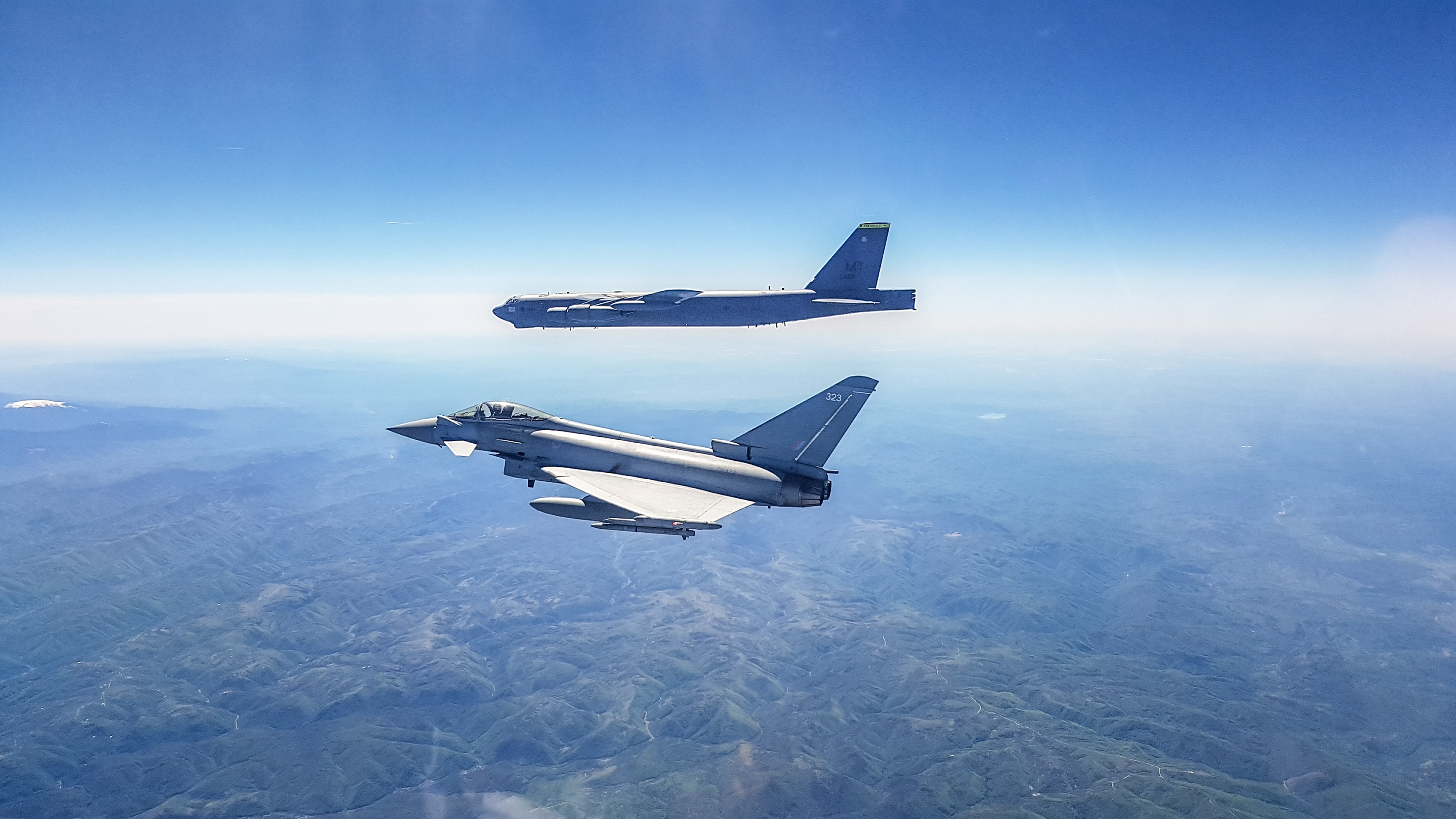
Batt says planning for these movements commenced months ahead of the deployment, to ensure that the RAF contingent was fully prepared and able to operate effectively from the off. “It is a real team effort, with logisticians, engineers, pilots, police and human resources experts (to name just a few), who all have to plan and deliver together to ensure that the mission can be executed effectively,” he said. “If one part of the team’s preparations fails, then the whole mission can be put in jeopardy; that’s how reliant we are on each other to do our jobs and do them well.”
“This deployment also provides a brilliant opportunity for the Squadron and Expeditionary Air Wing to develop as a formed unit,” says Batt. “We have been drawn together from units across the RAF and UK.
Living and working together in such close proximity is a great opportunity to learn about each other’s jobs and to see how we all contribute to the delivery of air power.
Within the current COVID-19 limitations, it is also amazing to be able to see a bit of this beautiful country and enjoy the local hospitality. We are only 12 miles from Constanta on the Black Sea coast, so this area has a lot to offer.”
“I am pleased to say that for Operation Biloxi all the planning, preparation and hard work paid off. We were flying training missions less than 48 hours after our Typhoons arrived in Romania and completed NATO accreditation on time.”
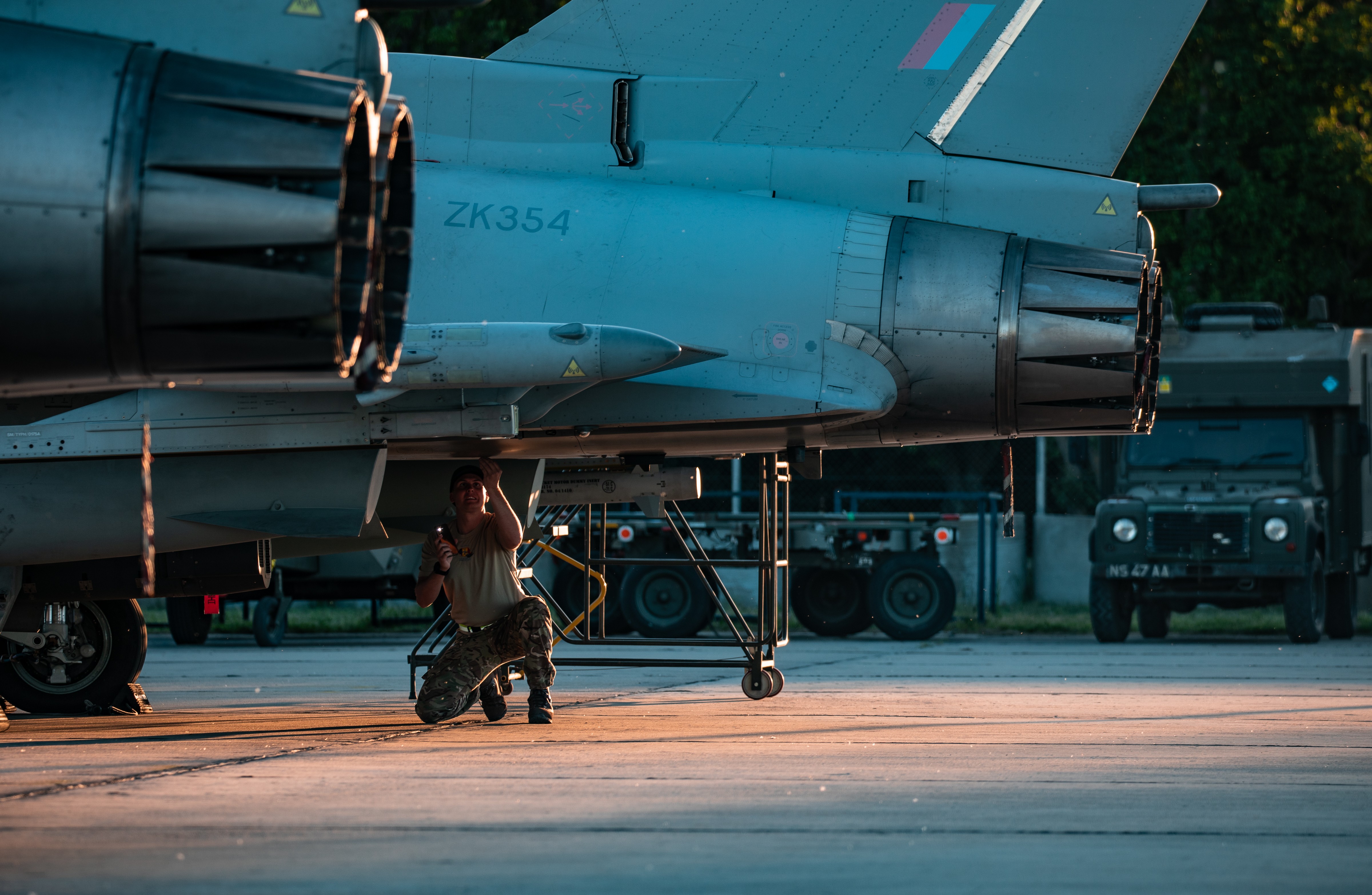
BUILDING STRONG AND LASTING RELATIONSHIPS
IX (B) Squadron’s deployment to Romania has also seen growing co-operation with their host’s air force and its has been conducting joint training for close air support with the Romanian Joint Terminal Attack Controllers and the MiG-21 Lancer pilots from 861st Combat Aviation Squadron.
“These training opportunities are invaluable to develop our tactics, align our procedures, and most importantly build strong and lasting relationships,” says Batt.
“As we are all part of NATO, we all use common standards and procedures. This makes it very easy to operate with and train alongside our allies. By working together, we deliver a more resilient and effective defensive network for the benefit of all.
The Romanians have been welcoming and helpful says Batt. “What is great is how we can work together and complement each other’s strengths to provide a much more effective defensive system overall.”
“Deployments like this are a brilliant opportunity to develop and hone our skills, train alongside our allies and strengthen the bonds we have with our NATO partners. The variety of missions we fly is fantastic. As well as delivering QRA and escort missions, such as with the USAF B-52
Stratofortress Bombers, we are doing close air support, helicopter support training and dissimilar air combat, where we practice air combat manoeuvres with another aircraft.”
Summing up the mission, Batt stresses the importance of all the RAF contingent working together. “This is a bit of a cliché, but we need the whole team to work effectively,” he says. “We hold QRA 24/7 and so we need the caterers and support teams to keep us fed and warm; our communications engineers and battle space managers produce and publish the recognised air picture.
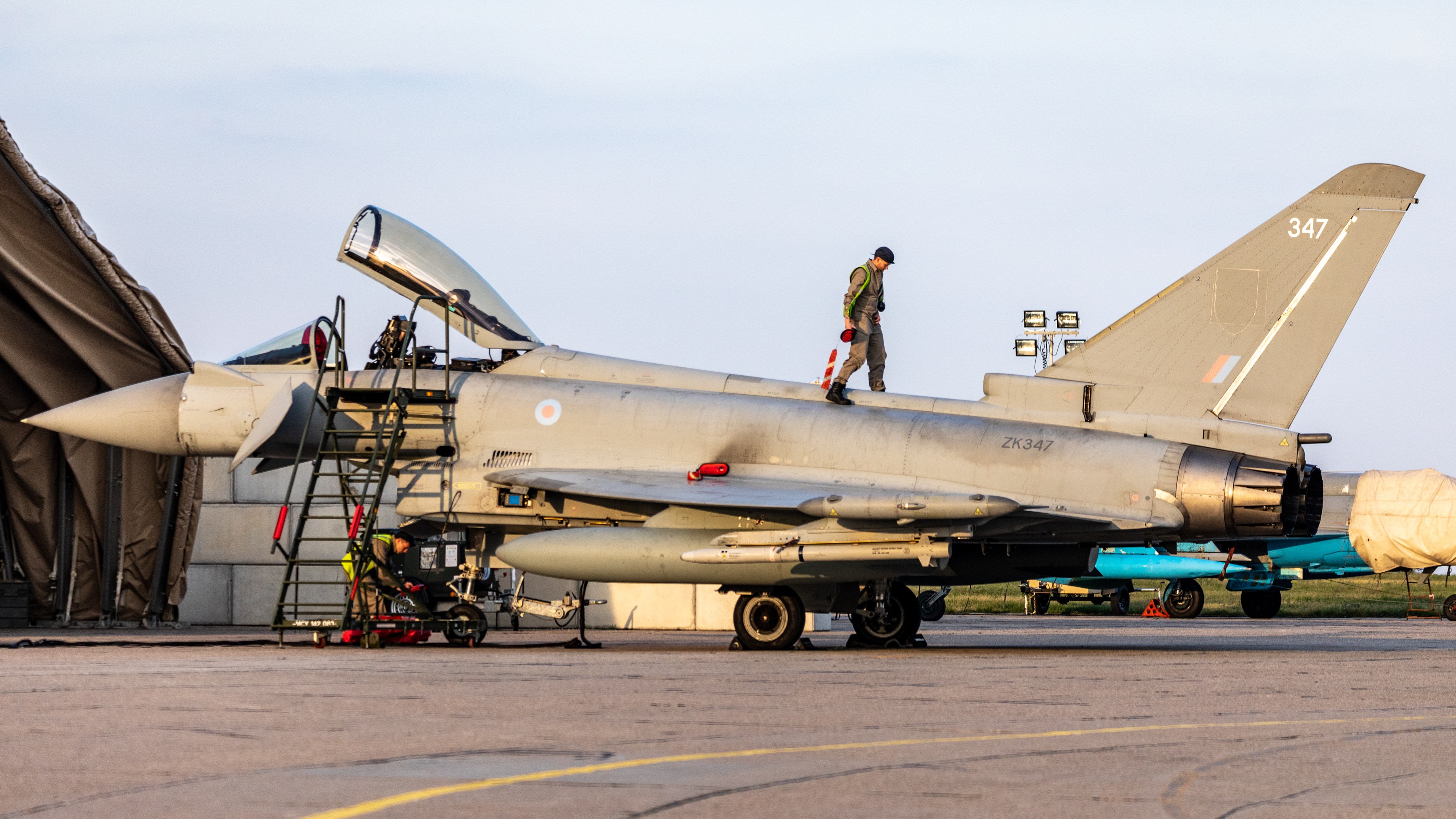
Force Protection provided by the RAF Regiment whilst we are here in Romania keeps us safe; the operations team update us with the weather and other aircraft movements; logistics personnel provide fuel and weapons; our engineers keep the aircraft primed and ready to go and the supporting ground equipment operational; and finally, the pilots are there ready to fly. All of this is maintained 24/7 so that we can launch at a moment’s notice to meet any threat.
The whole team works together to ensure we can get airborne in the fastest possible time, day or night, whatever the weather. In this job time is everything; when you are travelling at over 500 miles an hour every second counts.”
